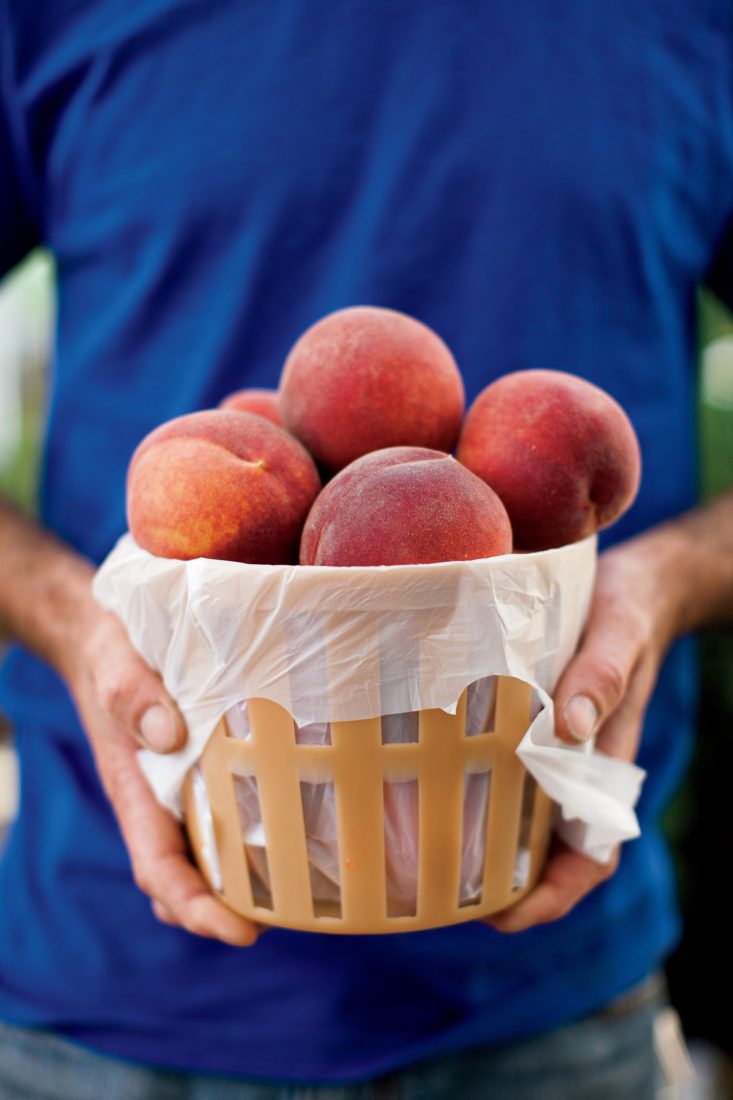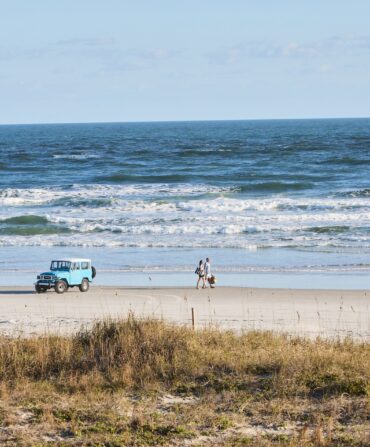City Portrait
Sweet Greenville
The hippest little city in South Carolina has figured out the good life

Photo: Andrew Stephen Cebulka
Say you marry your first boyfriend. You know about boys before that, the way you know about internal combustion engines: You can recognize one when you see it, and you have expectations it will take you somewhere. A boy ought to spin you around, buy you dinner, bring you flowers every once in a while. Say you meet a boy, and he does all that, and you go ahead and get married. You’re young. It’s not like you can say you know what you’re doing, but nobody’s going to tell you otherwise either. You’ve got a plan.
This is my first real hometown. Not somewhere I was born, but somewhere I picked myself. We moved to Greenville almost twelve years ago for the reasons people move places. There was a job at Furman University in a campus like a park, with a student body as nice and earnest as a professor’s dream. My brother lived here, finishing a degree at Clemson. Our daughter was young, I wanted to be near family again, and coming off a long run in Pennsylvania, I wanted to be back in the South, where I grew up.
It seemed like a nice town, rich in dogwoods and azaleas, in shade. A Southern town ought to have a lot of azaleas, a good barbecue joint with a Sunday church crowd, and some dead heroes in the cemeteries whom people still claim as their own. We bought a house just off the end of Main Street from a man who said the iron insets in the gates on the white picket fence had come from his family’s side of the Faulkner clan, and when I met his mother, I could ask. It was just what we were looking for.
When we moved in, our neighbors Lamar and Bob brought us a bottle of wine and a card printed with a poem by the late South Carolina poet laureate Bennie Lee Sinclair, because they had heard I was a writer. Lamar was in set design; Bob mostly liked to watch my brother work on his car in our driveway. This, not far from the ultraconservative shadow of Bob Jones University. We could spot the girls in the grocery store with their skirts past their knees, and the boys buying flowers every Friday, even though there was no dating allowed on campus. It seemed sweetly confused, like whatever’s going on over there was as private as what’s going on in my neighborhood. I liked the idea, even back then, that this town had room enough for both.
Just off the tail of the Appalachian Mountains, halfway between Charlotte and Atlanta, Greenville is a place that’s thought very carefully about itself and how it wants to grow. In the past twelve years, the city has reimagined the whole idea of downtown, of Main Street. It’s not a throwback or a theme park; it’s not quaint or cute. It’s just where we all want to go whenever we have the chance.
At its heart is a bridge. It’s a suspension bridge like the sail of a ship across the Reedy River at the falls, the river that’s always churned through here, that used to turn colors according to what fabric was being dyed in the mills along its banks. Now we race rubber ducks on it, we splash in it, we run our dogs alongside and our bikes and our baby strollers. We collect around it. It’s the center.
And when we head downtown to Falls Park for a weekend afternoon in summer, it always seems like there’s something going on, but it’s really just people enjoying living here. They drive in from the sprawl, the other country off Woodruff Road and its big-box stores, its soccer fields and cuts of planned developments with horse words on the street signs. They walk over from the Hampton Pinckney neighborhood with its Victorians, or the bungalows they’re renovating over on the west side, with their hair streaked the colors of bird feathers, their chunky glasses, and their cool. A trolley runs a loop down Main to Fluor Field, our little Fenway, past our big green monster, and over to the art museums and the library; just put your hand up when you see it coming and it stops for you.

Photo: Andrew Stephen Cebulka
A friendly wave on Main Street.
In the crowd, we hear other languages: French and German, Spanish from South America and Mexico, alongside the deep old-money tones that have always been made here, the sounds from the country, from the mountains. Upstate South Carolina is now home to more international investment per capita than any other region in the United States, including plants for BMW and Michelin. Pretty quickly, this small city begins to feel like a big place.
It eats like a big place, too. Tandoori and tacos, falafel and mjadra—we eat at the Pita House so often I’ve determined what percentage of my children’s bodies are Lebanese—Colombian patacones and arepas at Sacha’s with thick fruit milkshakes, goat curry at Jamaica Twist. The Bavarian Pretzel Factory makes its own Weisswurst every morning. You can find monkfish liver at Sushi Koji and absinthe at the Trappe Door, with water dripped from a tap through a sugar cube to cloud in your glass. And wherever we’re eating, there are people from that country eating, too.
But my favorite restaurant in the world is American Grocery. Joe Clarke sources as much of his menu as he can from local farmers, what’s grown and raised right here. The first time I ever ate beef tongue was at his table; the first time I ever barged into a restaurant kitchen was to thank him. The Saturday Market draws these same farmers to sell their produce from May through October, melons and peaches and beans, heirloom tomatoes with names like Cherokee Purple, after the first people to call this place home.
And like a good Southern town, we keep a hand on the past. The paths along the Reedy connect to the greater Swamp Rabbit trail, almost fourteen miles of reclaimed railroad now connecting Greenville to Travelers Rest. The old Markley Carriage Paint Factory, which became the Duke’s mayonnaise factory, now the Wyche Pavilion, stands on the banks near the Peace Center. Its open arches are hung with flowers and paper globes for this evening’s wedding. Everything belongs to something else, something with deeper roots, flourishing in unexpected new directions.
Above the park, there’s the campus of the South Carolina Governor’s School for the Arts and Humanities. High school students from all over the state, dancers and musicians, actors and artists and writers, live and work here, apprenticed to artists in their field—evil genius George Singleton publishes a book almost once a year, and he teaches his students as though they might one day do the same. These kids win national awards for their portfolios and become Presidential Scholars. They go to any college they want to go to, and this is where it starts.
We have two children now, and a white house with a garden that sometimes blooms. I cut peonies from my own yard for our table. We walk our son to school down our street. I love this place because I’ve loved it so long, and also because it keeps changing. It’s a loop I’m glad to travel, downtown on the trolley and back, across the bridge and back, each time noticing something new. Sometimes, you luck out the first time, and you get to stay forever.








